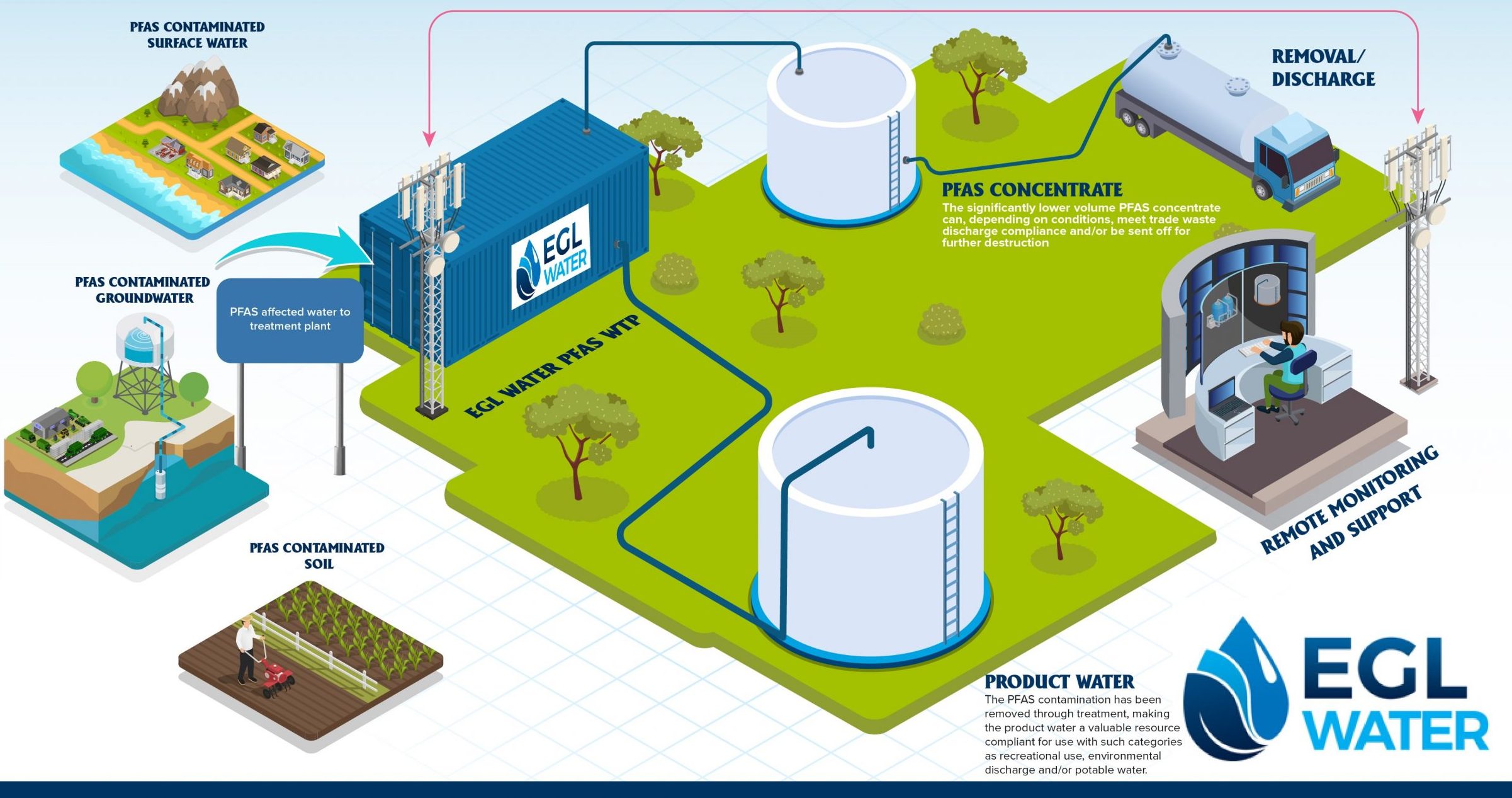Innovative PFAS Therapy Solutions for Safer Water
The raising prevalence of PFAS contamination in water materials demands an important examination of innovative treatment solutions. Additionally, arising bioremediation strategies supply an even more sustainable approach to taking on PFAS difficulties. pfas management.
Overview of PFAS Contamination
PFAS contamination has arised as a significant ecological and public health and wellness issue. Per- and polyfluoroalkyl substances (PFAS) are a group of synthetic chemicals understood for their perseverance in the atmosphere and human body, leading them to be frequently referred to as "permanently chemicals." These compounds have actually been widely utilized in numerous industries, consisting of firefighting foams, water-repellent textiles, and food packaging, mainly because of their water- and grease-resistant properties.
The prevalent use PFAS has actually resulted in their discovery in soil, water products, and even in the blood of people and animals. Research studies have linked PFAS direct exposure to various health and wellness concerns, consisting of developmental effects in infants, immune system dysfunction, and different kinds of cancer. Furthermore, the environmental persistence of these substances complicates their degradation and removal, elevating problems about long-lasting ecological impacts.
Governing bodies are progressively implementing rigid guidelines to monitor and lower PFAS levels in drinking water and other ecological mediums. As recognition of PFAS contamination grows, it has become vital for areas and sectors to seek effective treatment solutions to mitigate exposure and safeguard public health and wellness.
Advanced Filtration Technologies
As the urgency to resolve PFAS contamination increases, progressed filtering modern technologies have become a crucial component in the remediation efforts targeted at removing these consistent chemicals from water resources. These technologies take advantage of advanced devices to successfully target and capture PFAS compounds, which are notoriously immune to traditional treatment approaches.
One of the most appealing strategies is using granular triggered carbon (GAC), which adsorbs PFAS molecules due to its high area and porous framework. This approach has been widely applied in both local and commercial settings, showing considerable decreases in PFAS concentrations. In addition, ion exchange materials have actually gotten grip, especially designed to precisely bind PFAS ions from water, hence facilitating their removal.
Membrane layer purification innovations, such as reverse osmosis and nanofiltration, likewise reveal efficiency in PFAS removal by physically dividing contaminants from water - pfas management. These systems can achieve high degrees of pureness, making them appropriate for alcohol consumption water applications
Chemical Treatment Innovations
Countless chemical therapy technologies are being discovered to effectively address PFAS contamination in water products. One promising approach entails the usage of advanced oxidation processes (AOPs), which make use of powerful oxidants such as ozone, hydrogen peroxide, or chlorine dioxide incorporated with UV light to break down PFAS compounds right into less damaging compounds. This method has actually demonstrated effectiveness in laboratory settings, revealing potential for scalability in real-world applications.
One more innovative technique is the growth of ion-exchange materials particularly designed to target PFAS. These resins can precisely adsorb PFAS substances from water, enabling their removal throughout treatment procedures. Recent developments have improved the effectiveness and capacity of these materials, making them a positive option for water therapy centers.
In addition, scientists are investigating making use of chemical agents like persulfate and ferrous ions to boost the degradation of PFAS in contaminated water. These representatives can generate chemical reactions that facilitate the break down of persistent PFAS compounds.
Arising Bioremediation Techniques
Recent improvements in chemical treatment advancements have paved the way for discovering bioremediation techniques as a viable choice for attending to PFAS contamination. Bioremediation harnesses the all-natural metabolic procedures of microorganisms to break down or change pollutants, making it an enticing published here technique for taking on relentless contaminants like PFAS.
Emerging methods in bioremediation include making use of genetically engineered microbes that can especially target and damage down PFAS compounds. These microbial strains are being created for their boosted destruction capabilities, increasing the efficiency of the removal process. In addition, scientists are checking out the potential of plant-assisted bioremediation, where specific plant species may uptake and sequester PFAS from polluted dirt and water.
One more encouraging approach is the application of bioaugmentation, which includes introducing helpful microbes right into infected environments to increase the deterioration of PFAS. This approach can assist in quicker removal timelines and enhance general performance.

Governing Structures and Standards
A comprehensive regulative framework is essential for successfully taking care of PFAS contamination and guaranteeing public wellness defense. The increasing acknowledgment of per- and polyfluoroalkyl materials (PFAS) as ecological contaminants has actually triggered numerous government and state agencies to establish requirements that regulate their presence in water supplies. The United State Environmental Protection Firm (EPA) has established he said wellness advisories and is functioning toward setting enforceable limits for PFAS in drinking water.
State-level regulations vary substantially, with some states adopting stricter standards than those recommended by the EPA. These regulations typically these details consist of optimum impurity levels (MCLs) for certain PFAS compounds, surveillance demands, and reporting obligations for water utilities. In addition, emerging frameworks focus on the removal of infected sites, highlighting the demand for effective treatment technologies.

Conclusion
In final thought, the development and execution of cutting-edge PFAS treatment services are important for attending to the pervasive problem of water contamination. Advanced filtering modern technologies, chemical therapies, and emerging bioremediation techniques jointly present a diverse method to efficiently lower and degrade PFAS degrees. As regulative structures remain to evolve, incorporating these technologies will be necessary to protect public wellness and recover the stability of contaminated water sources, inevitably contributing to a cleaner and safer atmosphere.